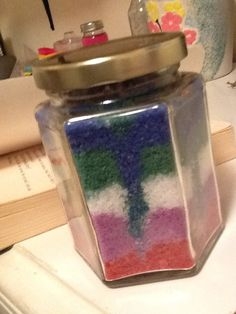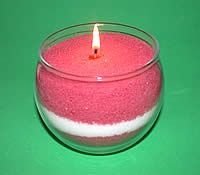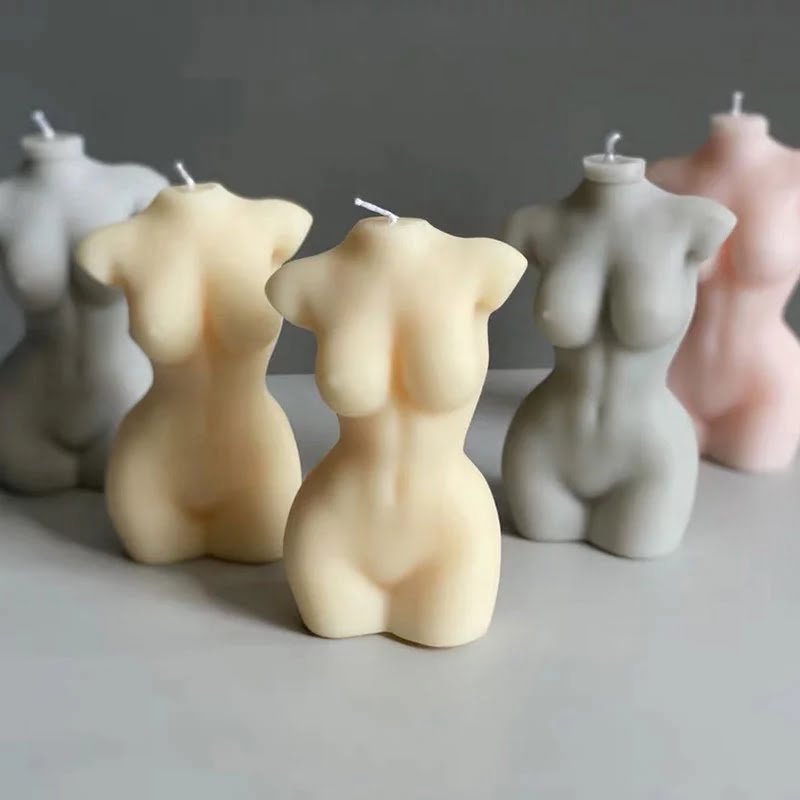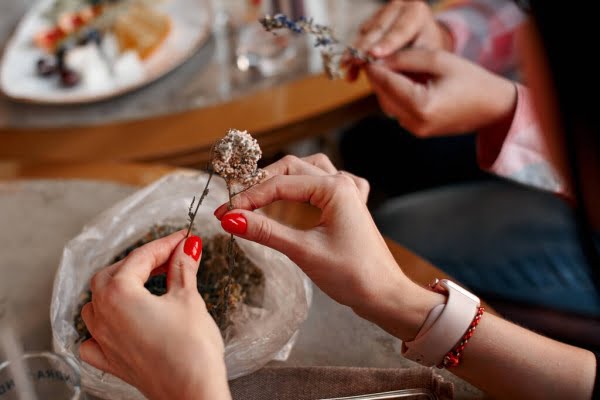Candle making is a popular and enjoyable craft that allows individuals to express their creativity while creating beautiful and functional home decor items. Whether it’s for personal use, gifting, or a small business venture, understanding the cost of candle making materials is crucial for anyone looking to engage in this hobby or industry. The expense involved in sourcing high-quality ingredients can significantly impact the overall production cost and the final selling price of candles.
When it comes to candle making, there are several essential materials that one must consider, including wax, fragrance oils, wicks, and additives. Each of these components plays a vital role in the quality and performance of the finished product. Additionally, the type and quality of these materials can vary greatly, leading to differences in pricing that can ultimately affect the overall cost of candle making.
In this article, we will delve into the various aspects of candle making materials, focusing on their importance as well as their associated costs. By exploring different types of wax, fragrance oils, wicks, additives, and dyes commonly used in candle making, we aim to provide valuable insights into understanding and managing the expenses involved in this creative endeavor. Furthermore, we will provide tips for identifying budget-friendly supplies without compromising on quality or performance.
Essential Candle Making Materials
When it comes to candle making, having the right materials is essential for creating high-quality candles. These essential materials include wax, fragrance oils, wicks, and additives. Each of these components plays a crucial role in the candle-making process, and it’s important to understand the importance of using quality ingredients.
One of the key factors to consider when making candles is the cost of candle making materials. It’s important to factor in the expense of each component in order to determine the overall cost of producing candles. This includes considering the price of wax, fragrance oils, wicks, and additives, as well as any other materials used in the process.
The cost of candle making materials can vary depending on factors such as quantity, quality, and type of material used. For example, there are different types of wax available for candle making, including soy wax, paraffin wax, and beeswax, each with its own associated cost. Similarly, fragrance oils and essential oils come in a wide range of prices depending on their quality and source. Understanding these costs can help candle makers make informed decisions when purchasing materials for their craft.
The Importance of Quality Ingredients in Candle Making
When it comes to candle making, the quality of ingredients used can make a significant difference in the final product. Ensuring that you use high-quality materials can result in better burning candles with stronger scents and vibrant colors. Here are some essential candle making materials that you should consider investing in to achieve the best results:
1. Wax: The type and quality of wax used in candle making can greatly impact the overall performance of the candle. Different types of wax, such as soy, paraffin, and beeswax, come with varying costs. It’s important to choose a wax that not only fits your budget but also meets your specific requirements for burn time and scent throw.
2. Fragrance Oils and Essential Oils: The fragrance oils and essential oils used in candles contribute to the overall aroma of the product. High-quality oils may come with a higher price tag, but they also tend to provide a more intense and longer-lasting scent when the candle is burning.
3. Candle Wicks and Wick Tabs: The choice of wick material and size can affect how well the candle burns. Investing in good-quality wicks and wick tabs can lead to a more even burn and reduce issues like tunneling or soot buildup.
While it’s important to prioritize quality when choosing candle making materials, it’s also crucial to be mindful of the cost of these ingredients. Balancing quality with affordability is key to running a successful candle making business or hobby without breaking the bank. By evaluating different types of materials available and their respective costs, you can make informed decisions that maximize both value and quality in your candle making endeavors.
Understanding the Cost of Candle Making Materials
Candle making is a popular hobby and even a small business for many people. However, the cost of candle making materials can add up quickly, especially if you are not mindful of your expenses. It’s important to understand the various factors that contribute to the overall cost of candle making materials in order to make informed decisions about purchasing supplies.
One of the most significant factors affecting the cost of candle making materials is the type of wax used. Different types of wax vary in price, and their costs can impact your overall expenses. For example, soy wax is generally more expensive than paraffin wax, but it is considered a more eco-friendly option. Beeswax is another popular choice, known for its natural and clean-burning properties, but it tends to be one of the most expensive options.
Another crucial component when considering the cost of candle making materials is fragrance oils and essential oils. These oils are responsible for giving candles their pleasant scents, but they also contribute to the overall expense. High-quality fragrance oils and essential oils tend to be more costly, but they will also result in better-scented candles. It’s important to find a balance between cost and quality when selecting these ingredients for your candles.
When evaluating the expense of candle wicks and wick tabs, it’s essential to consider their quality as well as their price. Cheaper wicks may result in poor burn performance or sooty candles, leading to potential customer dissatisfaction or wasted products. Investing in higher-quality wicks might incur a higher initial cost, but it can lead to better end results and customer satisfaction.
| Candle Making Material | Cost Range |
|---|---|
| Soy Wax | $3 – $6 per pound |
| Beeswax | $8 – $12 per pound |
| Fragrance Oils | $5 – $20 per 2 oz bottle |
Comparison of Different Types of Wax and Their Costs
When it comes to candle making, choosing the right type of wax is crucial in achieving the desired quality and cost efficiency. There are different types of wax available in the market, each with its own unique characteristics and costs. In this section, we will explore the various options for candle wax and their associated costs.
Paraffin Wax
Paraffin wax is one of the most commonly used waxes in candle making. It is affordable and easy to work with, making it an ideal choice for beginners. However, the cost of paraffin wax may vary depending on factors such as purity and melting point. Generally, lower-grade paraffin wax is more budget-friendly, but it may also produce candles with subpar quality.
Soy Wax
Soy wax has become increasingly popular among environmentally conscious candle makers due to its renewable and biodegradable nature. While soy wax may be slightly more expensive than paraffin wax, many creators are willing to invest in this eco-friendly option for its clean-burning properties and overall appeal.
Beeswax
Beeswax is considered a premium option for candle making, known for its natural fragrance and long-lasting burn time. However, beeswax tends to be one of the pricier choices among waxes available in the market. Despite its higher cost, many artisans value beeswax for its beautiful golden color and superior quality.
Evaluating the Price of Fragrance Oils and Essential Oils
When it comes to evaluating the cost of candle making materials, fragrance oils and essential oils are essential ingredients that can significantly impact the overall expense of creating candles. These oils are used to add scent to the candles and can come with varying price tags depending on factors such as quality, type, and supplier. Here is a breakdown of the cost considerations when it comes to fragrance oils and essential oils:
1. Quality: The quality of fragrance oils and essential oils plays a crucial role in determining their cost. High-quality, pure oils typically come with a higher price tag due to the extraction processes and purity levels. On the other hand, lower quality or synthetic oils may be more affordable but can affect the overall quality and performance of the candles.
2. Type: Different types of fragrance and essential oils have different price points. For example, exotic or rare essential oils such as jasmine or sandalwood may be more expensive compared to common scents like lavender or vanilla. Similarly, certain fragrance oils that mimic specific scents may also vary in cost depending on their complexity.
3. Supplier: The supplier from which you purchase your fragrance and essential oils can also impact their cost. Some suppliers may offer bulk discounts or wholesale prices for larger quantities, while others may specialize in premium or organic options that come with a premium price.
When considering the cost of these materials, it’s important for candle makers to balance affordability with quality to ensure a final product that meets both budgetary constraints and customer expectations.
Calculating the Expense of Candle Wicks and Wick Tabs
When it comes to candle making, one of the essential materials that need to be considered in terms of cost is the candle wicks and wick tabs. These components are crucial in ensuring that the candle burns evenly and efficiently, and they also contribute to the overall appearance and quality of the finished product.
Factors Affecting Cost
The cost of candle wicks and wick tabs can vary depending on several factors. The type and size of the wick, as well as the material used, can all impact the overall cost. Additionally, the quantity of wicks purchased at a time can also affect the price, with bulk purchases often resulting in lower costs per unit.
Quality Matters
It’s important to note that while there may be cheaper options available for wicks and tabs, prioritizing quality is crucial. A low-cost wick may not perform as well as a higher-quality alternative, leading to issues such as uneven burning or tunnelling. Investing in high-quality wicks and tabs may initially seem more expensive, but it can result in a better overall experience for both the candle maker and the end consumer.
Tips for Managing Expense
To manage the cost of candle wicks and wick tabs, it’s beneficial to shop around for suppliers and compare prices. Bulk purchasing from reputable suppliers can often result in lower per-unit costs. Additionally, considering alternative materials or sizes for wicks may also provide a budget-friendly option without compromising on quality.
Finally, understanding the specific requirements of each candle type being produced can help avoid overspending on unnecessary supplies. By carefully managing expenses related to wicks and tabs, it’s possible to maintain cost efficiency without sacrificing quality in candle making.
By taking these factors into consideration when calculating the expense of candle wicks and wick tabs, it becomes clear that while these materials are an essential part of candle making, careful planning can ensure cost efficiency without compromising on quality.
Cost Efficiency of Candle Making Additives and Dyes
When it comes to candle making, additives and dyes are important components that can affect the overall cost of the materials used. Additives such as UV inhibitors, stearic acid, and vybar can enhance the quality and performance of the candle but also add to the cost. Dyes, on the other hand, are essential for adding color to the candles but can vary in price depending on the type and quality of dye used.
One way to assess the cost efficiency of additives and dyes is to consider their impact on the overall quality of the candles. While it may be tempting to opt for cheaper alternatives, it’s important to remember that using lower-quality additives and dyes can result in inferior candles that may not burn properly or produce desirable scents. This could ultimately affect customer satisfaction and repeat business, potentially costing more in the long run.
To ensure cost efficiency without compromising quality, candle makers should carefully evaluate their options when it comes to additives and dyes. It’s worth investing in high-quality additives that can improve burn time, scent throw, and overall performance of the candle. Similarly, opting for premium dyes that produce vibrant and long-lasting colors might be a better investment in the long term.
Tips for Budget-Friendly Candle Making Supplies
When it comes to making candles, the cost of candle making materials can add up quickly. However, there are ways to make this hobby more budget-friendly without sacrificing the quality of your products. Here are some tips for finding affordable candle making supplies.
One way to save money on candle making materials is to buy in bulk. Many suppliers offer discounts for purchasing larger quantities of wax, fragrance oils, and other essential ingredients. By buying in bulk, you can significantly reduce the cost per unit and save money in the long run.
Another tip for saving money on candle making supplies is to look for deals and discounts. Keep an eye out for sales at craft stores, online suppliers, and local markets. You can also sign up for mailing lists or follow suppliers on social media to stay informed about special offers and promotions.
Finally, consider exploring alternative sources for candle making materials. For example, you may be able to find used equipment or surplus supplies at a lower cost from other candle makers or crafters looking to offload excess inventory. Additionally, some natural ingredients like dried flowers or herbs can be sourced from your own garden or local farmers’ markets at a lower cost compared to commercially purchased options.
By implementing these tips and being a savvy shopper, you can keep the cost of candle making materials manageable while still producing high-quality candles that you can be proud of.
Conclusion
In conclusion, the cost of candle making materials is a significant factor to consider for individuals looking to get into candle making as a hobby or business. As discussed in this article, it is important to prioritize quality ingredients in order to create high-quality candles that are safe and effective. While it may seem daunting to invest in these materials initially, the long-term benefits far outweigh the initial costs.
When considering the cost of candle making materials, it’s important to evaluate the different types of wax available and their associated costs. Additionally, fragrance oils, essential oils, wicks, wick tabs, additives, and dyes all contribute to the overall expense of candle making. By carefully comparing prices and investing in high-quality materials that will last longer and produce better results, candle makers can prioritize value while optimizing their budget.
Ultimately, maximizing value and quality in candle making materials involves finding a balance between cost-effectiveness and product excellence. By following the tips provided in this article and being mindful of where to invest more or cut back on expenses, anyone can enjoy the rewarding experience of creating beautiful, high-quality candles without breaking the bank.
With careful planning and consideration of the long-term benefits, individuals can make informed decisions about their candle making supplies that will lead to both financial savings and a superior end product.
Frequently Asked Questions
Is It Cheaper to Make Candles Than Buy Them?
It can be cheaper to make candles than to buy them, especially if you plan on making large quantities or unique designs. However, the cost of supplies and equipment must be taken into consideration.
How Many Candles Does 1 Pound of Wax Make?
The number of candles that can be made from 1 pound of wax depends on the size of the candles being produced. On average, 1 pound of wax can make approximately 4 medium-sized candles.
Is It Expensive to Start Making Candles?
Starting a candle-making business can be expensive initially, as you’ll need to invest in supplies like wax, wicks, fragrance oils, and dyes, as well as equipment like a melting pot and thermometer. However, with time and successful sales, the initial investment can pay off.

Welcome to my candle making blog! In this blog, I will be sharing my tips and tricks for making candles. I will also be sharing some of my favorite recipes.





